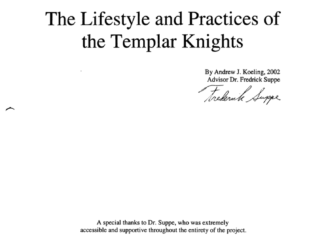
One of history’s most unusual conspiracy theories involved Queen Elizabeth I, the daughter of England’s King Henry VIII and his second wife Anne Boleyn. During the first half of the sixteenth century, Elizabeth was born to the tyrannical English king. When she was about ten years old, she was taken from Henry’s court in plague-ridden London to Bisley, a small town Southwest of London, because he wanted to protect her from getting sick.
According to legend, young Elizabeth died in Bisley. Her caretakers panicked when they found her body, and knew that Henry would return sooner than expected to visit his daughter. Afraid for their lives, they anxiously searched the town to find a girl who looked like Elizabeth. After a futile attempt to find a read-haired girl, they found a boy with red hair who was about the same height as Elizabeth. This boy, whose name was Neville was actually a friend or relative who played with Elizabeth. They brought him back to their home and dressed him in Elizabeth’s clothes. Apparently, when Henry returned he couldn’t tell the difference between the boy and Elizabeth. So, the boy kept assuming the role as the dead princess and continued pretending to be the future queen.
Bram Stoker, the famous author of the novel Dracula, wrote a book called Famous Imposters in 1910. In one of its chapters called, The Bisley Boy, Stoker presents solid evidence that Elizabeth was actually a man. Stoker defends this story with the following facts:
1. In the 1800’s, a trusted clergyman who lived in Bisley reported discovering a coffin in Bisley, which contained the skeleton of a young girl dressed in clothes typical of the Renaissance upper-classes.
2. Despite legitimate offers, the grown Elizabeth never consented to marriage. As a matter of fact, she did not have any intimate relationships with any males. This fact might contribute to the reason why she was called, “The Virgin Queen.”
3. In most of her portraits, Elizabeth has a masculine face.
4. Historians have described her taking action to protect England, more like a confident king than a “womanly” queen.
5. A nobleman had once written regarding Elizabeth that “for a certain reason which they have recently given me, I understand that she will not bear children.”
6. There was a marked difference in the form and content of letters she wrote before and after her stay in Bisley.
7. She owned a large collection of wigs and wore them at all occasions where she would be seen.
8. She would only be seen by carefully selected doctors.
9. Elizabeth made her doctors swear not to do an autopsy of her body after she died.
Although Stoker supports a solid case that Elizabeth I was actually a man, his story was not well received by readers. Many thought that the story was preposterous because if she had been a male, somebody close to her court would have known and the news would have leaked out. However, when Stoker investigated the story, he met a large number of people who really believed the story. Interesting enough, those who supported the story lived in Bisley a few years after the discovery of the skeleton of a little girl, dressed in Renaissance clothes by a trusted clergyman. Whatever the case may be regarding the queen’s identity, “Elizabeth I” ruled England with true loyalty for England and her people and was committed to preserving English peace and stability. After her death, at seventy years old in 1603, she was missed by many of her subjects.
Unless otherwise stated, PONIREVO and/or its licensors DO NOT own any intellectual property rights in the website and material on the website. Majority of the site’s content has been scraped and auto posted by a third party artificial intelligence program —– PONIREVO Creation Team.
Proudly WWW.PONIREVO.COM



